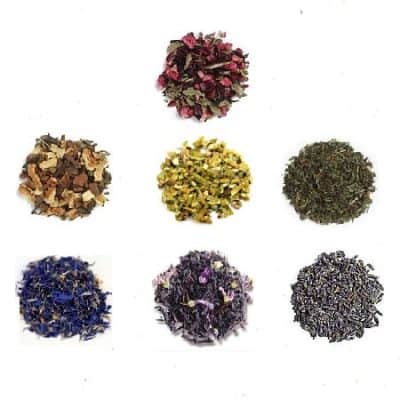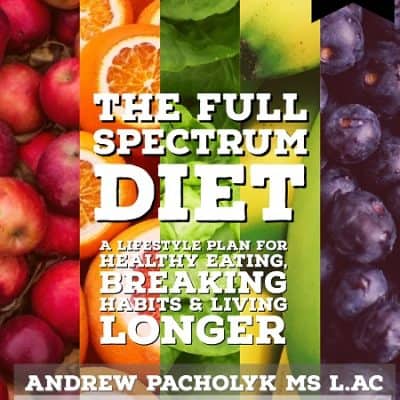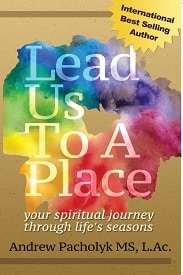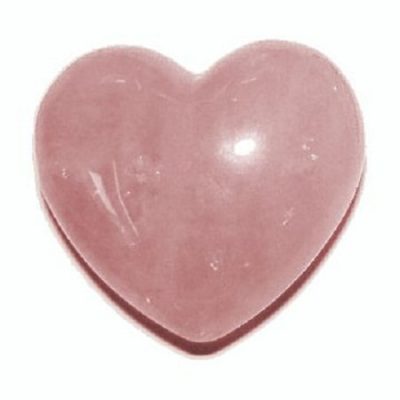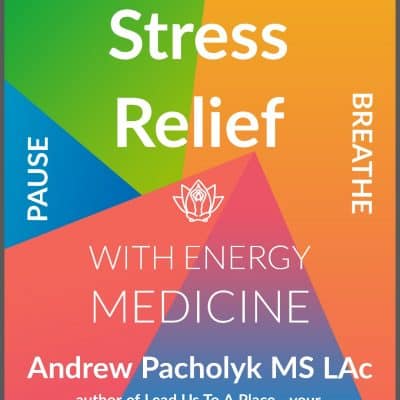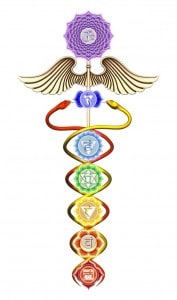 Heart Health
Heart Health
See also: cholesterol, blood pressure, diabetes, smoking, weight loss
The heart provides the power we need to live. Arguably the most important muscle we have. In an average lifetime, the heart beats more than two and a half billion times, without ever pausing to rest. The heart supplies the force to circulate blood throughout the body. The blood transports oxygen and nutrient to the cells of the body and carries waste and other substances from the cells. It pumps an average of 6000 quarts of blood daily.
The heart is made up of four chambers. There are two chambers on each side of the heart. One chamber is on the top and one chamber is on the bottom. The two chambers on top are called the atria. The atria fill with the blood returning to the heart from the body and lungs. The heart has a left atrium and a right atrium.
The two bottom chambers are called the ventricles. The heart has a left ventricle and a right ventricle. They pump out blood to the body and lungs. Running down the middle of the heart is a thick wall of muscle called the septum. The septum separates the left and right side of the heart.
The atria fill with blood, then pump it into the ventricles. The ventricles then pump blood out of the heart. While the ventricles are pushing, the atria refill for the next contraction. Four valves control the flow of blood through the chambers.
Two of the heart valves are the mitral valve and the tricuspid valve. They let blood flow from the atria to the ventricles. The other two are called the aortic valve and pulmonary valve. They control the flow as the blood leaves the heart. These valves all work to keep the blood flowing forward. They open up to let the blood move ahead, then they close quickly to keep the blood from flowing backward.
The heart is monitored by two vital statistics; checking the blood pressure and the pulse. Your doctor could also do an Echocardiograph and Electrocardiograph, which are two techniques that provide detailed information about the heart without causing any discomfort to the patient. If these procedures do not provide enough information, exploratory procedures may need to be performed. Cardiac catheterization and angioplasty are two common methods for exploring the heart.
Heart disease is still the number one killer of both men and women. Awareness is the first step. Know your cholesterol, blood pressure and ideal weight. Lower risk factors and prevent early disability, illness or even death from heart disease or stroke.
Improving Heart Health
1. Maintain a Healthy Weight with Exercise: Move it! The body was designed to move, so do not be stationary. Incorporate the right amount of cardiovascular aerobic exercise to get your heart pumping and a regular regimen of weight baring exercise and gentle stretching!
2. Eat Heart Health Foods These foods include non meat sources of protein (grains, tofu, nuts), fish, poultry, lean meat (35-60 grams per day), skim or low-fat milk, cottage cheese, margarine , non hydrogenated, that is high in vegetable oils (such as corn, cottonseed, safflower, sunflower, sesame, or soybean). Also onions, garlic, chickpeas, fresh vegetables and fruit.
3. Check Your Cholesterol: Cholesterol is a type of fat that is an essential nutrient for your body. High levels of saturated fats can cause an excess of cholesterol to build up in the arteries. Cholesterol is considered abnormal when the Total cholesterol is 200 or higher. HDL or “good” cholesterol level is less than 40. LDL or “bad” cholesterol is more than 160.
4. Maintain A Normal Blood Pressure Range: Those with high blood pressure are three times more likely to have a heart attack! The upper (systolic) number represents the pressure while the heart contracts to pump blood to the body. The lower (diastolic) number represents the pressure when the heart relaxes between beats. Blood pressure below 120 over 80 mmHg (millimeters of mercury) is considered optimal for adults.
5. Stop Smoking: Period! No ifs, ands or butts! Smoking increases the risk of heart disease by raising blood pressure, abnormal blood clotting and hardening of the arteries or Arteriolosclerosis, not to mention lung disease.
6. Control Blood Sugar Levels: A normal fasting blood sugar is 100 or less. A fasting blood sugar of 126 or greater indicates diabetes. Overweight and too little exercise is what increases the risk of type 2 diabetes. Diabetes can lead to heart disease, stroke, kidney disease, and even blindness.
7. Maintain Lean Body Mass: According to The Cleveland Clinic, A BMI (Body Mass Index) of 40 or more indicates morbid obesity, which increases a person’s risk of death from any cause by 50% to 150%.
8. Balance Stress and Emotional Tension: The fight or flight reaction to a stressful situation is normal and important. The constant bombardment with stressful, over stimulating situations over time, causes adrenaline levels to rise, becoming chronic and abnormal. This continues pattern promotes hardening of the arteries and the formation of blood clots. Drug use, especially the use of cocaine has been shown to cause heart attacks. Say NO to drugs.
9. Work on Anger Management: The “Type A Personality” has been recognized as a definable risk factor. This personality type usually has higher blood pressure, higher blood cholesterol levels and both higher and lower levels of certain hormones.
10. Know Your Family History: Although you can’t help heredity, you can certainly “be aware” of any risk factors that may have been passed down through your family tree. Especially your immediate family. Below, you will find a list of family medical history questions about heart disease.
If You Suspect A Heart Attack
If you suspect a heart attack, seek emergency medical treatment immediately. Should a heart attack occur, you should go to the emergency room and seek help immediately. Time is of essence. Only examination by a doctor, who will administer an electrocardiogram (EKG) and/or a blood test, can confirm if you are having a heart attack.
Signs and Symptoms present as pain that is crushing, tightness, squeezing, band-like, radiating, cyanosis, sweating, cold, “clenching fist over heart”, pain in the ear, umbilicus, jaw, teeth, back, arm, hand pain (often on the ulnar side), autonomic response of vomiting, nausea or a feeling of impending doom.
About one third of people who have a heart attack do not have chest pain. Such people are more likely to be women, people who are not white, those who are older than 75, those who have heart failure or diabetes, or those who have had a stroke.
Heart attack symptoms for women can be slightly different and present with a feeling of faintness, sudden heavy sweating, nausea, shortness of breath and a heavy pounding of the heart.
Abnormal heart rhythms (arrhythmias) occur in more than 90% of people who have had a heart attack. Immediately and up to a few days after a heart attack, abnormal heart rhythms are a common reason that the heart cannot pump adequately. Abnormal heart rhythms originating in the ventricles (ventricular arrhythmias) may greatly interfere with the heart’s pumping ability or may cause the heart to stop pumping effectively (cardiac arrest). A loss of consciousness or death can result. Sometimes loss of consciousness is the first symptom of a heart attack.
A blood clot is the most common cause of a blocked coronary artery. Usually, the artery is already partially narrowed by atheromas. An atheroma may rupture or tear, narrowing the artery further and making blockage by a clot more likely. The ruptured atheroma not only reduces the flow of blood through an artery but also releases substances that make platelets stickier, further encouraging clots to form.
Uncommonly, a heart attack results when a clot forms in the heart itself, breaks away, and lodges in a coronary artery. Another uncommon cause is a spasm of a coronary artery that stops blood flow. Spasms may be caused by drugs. Sometimes the cause is unknown.
Risk Factors
Heart disease can present with:
#1 sign of Dyspnea
#2 is Angina (angina pectoris) aka: chest pain as well as: pain, arrhythmias, orthopnea, weakness, fatigue.
Risk factors include: High cholesterol, smoking, genetic pre-disposition, obesity, a sedentary lifestyle, hypertension, alcoholism, diabetes mellitus, hypothyroidism.
Certain disorders increase the risk of coronary artery disease. They include high levels of the amino acid homocysteine in the blood (hyperhomocysteinemia), diabetes, and low levels of thyroid hormones (hypothyroidism). Diabetes greatly increases the risk. Many people with diabetes have high blood pressure, have high cholesterol levels, are obese, and tend to be physically inactive. The cause of death in more than 80% of people with diabetes is a heart or blood vessel disorder.
Whether infection with certain organisms contributes to the development of coronary artery disease is uncertain. The organisms suspected include Chlamydia pneumoniae (which can cause pneumonia), Helicobacter pylori (which can contribute to stomach ulcers), and a virus (as yet unidentified). Nonetheless, inflammation, whether caused by infection or not, appears to contribute to the development of coronary artery disease. If an atheroma becomes inflamed, it softens and is more likely to rupture, and blood clots are more likely to form.
Endocarditis
either bacterial or viral attack of the inner lining of the heart. Bacterial endocarditis is an infection of the heart’s inner lining (endocardium) or the heart valves. This can damage or even destroy your heart valves. Bacterial endocarditis occurs when bacteria in the bloodstream (bacteremia) lodge on abnormal heart valves or other damaged heart tissue. Certain bacteria normally live on parts of your body, such as the mouth and upper respiratory system, the intestinal and urinary tracts, and the skin. Some surgical and dental procedures cause bacteremia. Bacteremia is common after many invasive procedures, but only certain bacteria commonly cause endocarditis. When having a dental or surgical procedure, antibiotics are prescribed to prevent the bacteria from surviving in the bloodstream. The American Heart Association has an endocarditis wallet card to carry. It’s also important to maintain good oral health through regular visits to the dentist and regular brushing and flossing.
Enlarged Heart
Enlarging of the heart can be from improper exercise, diet, rheumatic fever or prolonged heart and circulatory disease. Hypertrophy involves an increase in the thickness of the heart muscle. Dilation involves an increase in the size of the inside cavity of a chamber of the heart. Hypertrophy usually occurs in only one chamber while dilation may occur in one, two, three, or all of the chambers, based on the cause. In most cases, cardiac enlargement is abnormal and accompanied by additional cardiovascular problems. An exception to this is regular aerobic exercise, which produces a beneficial enlargement involving both hypertrophy and dilation of the heart.
Mitral Valve Prolapse
This disorder occurs when a valve in the heart does not close properly letting blood to . Rheumatic Fever- A very involved inflammation stemming from the strep germ which involves the heart and joints. Children and young adults are particularly vulnerable.
Emergency Care
The most important thing to do if you think you are having heart attack symptoms:
Dial 911 to call an ambulance or get to a hospital emergency room as quickly as possible so the doctor can examine and treat you.
Crush or chew a full-strength aspirin (swallow with a glass of water) to prevent further blood clotting.
Managing Your Heart
Family History: Although you can’t help heredity, you can certainly “be aware” of any risk factors that may have been passed down through your family tree. Especially your immediate family. Below, you will find a list of family medical history questions about heart disease.
1. If any members of your immediate family (mother, father, sisters, brothers) developed coronary heart disease (angina or heart attack) at a young age (female under 65 and males under 55) you could have an increased risk.
2. Having coronary heart disease in your family could be linked to an inherited tendency for high blood pressure or high blood cholesterol levels. Alternatively there may be unknown genes causing coronary heart disease which is not related to obvious inherited risk factors.
3. The key known risk factors for coronary heart disease are smoking, a diet high in saturated fat, being overweight, physical inactivity, high cholesterol, high blood pressure and diabetes. They often relate to lifestyle habits that are passed from one generation to the next. But these factors only explain part of the problem.
4. Familial hyperlipidaemia is when high blood cholesterol levels run in your family. It means that you have inherited a faulty gene that affects the way that excess cholesterol is produced by your body. This increases your blood cholesterol level, which increases your risk of atherosclerosis (the narrowing or furring of the coronary arteries). If one parent has the gene then his or her children have a 50:50 chance of inheriting it. If you have been told that you have familial hyperlipidaemia, it is important that you tell other members of your family so that their doctors can measure their blood cholesterol levels and if necessary prescribe drug treatment as well as dietary advice.
Even if it runs in your family, reducing and controlling your risk factors will significantly reduce your risk of developing coronary heart disease. It is very important to tell your doctor or practice nurse if you have a family history of coronary heart disease.
Body Mass Index (BMI)
According to The Cleveland Clinic, A BMI (Body Mass Index) of 40 or more indicates morbid obesity, which increases a person’s risk of death from any cause by 50% to 150%. BMI is an indirect measure of your body fat, which is a quick way to see if you are overweight. BMI uses a person’s weight and height to gauge total body fat.
A BMI of 18.5-24.9 is ideal.
A BMI of 25 to 29.9 is overweight.
A BMI of 30 or more indicates obesity.
A BMI of 40 or more indicates morbid obesity, which increases a person’s risk of death.
Calculate your BMI here

Heart Conditions
Arrhythmias: An arrhythmia is an irregular pattern of the heart’s beat. A murmur indicates that blood is seeping through the closed valve separating the atrium and ventricle.
Arteriosclerosis: Hardening of the arteries can happen to any artery, but is most serious in those vessels that channel blood to the heart and brain. The main cause of this is cholesterol or calcium build up in arteries.
Congenital Heart Disease & Congenital Septal Defect: Some times, heart defects can be detected when we are born. This is what’s considered a congenital defect. Septal defect is being born with a hole in the heart.
Congestive Heart Failure: As your heart’s pumping action lessens, blood may back up in your lungs, liver, or legs reducing their ability to function properly, weakening the heart.
Coronary Artery Disease: This inadequate blood supply deprives the heart muscle of oxygen and damages the heart tissue caused by fatty deposits or plaque accumulation.
“Andrew’s Best Remedies”
-
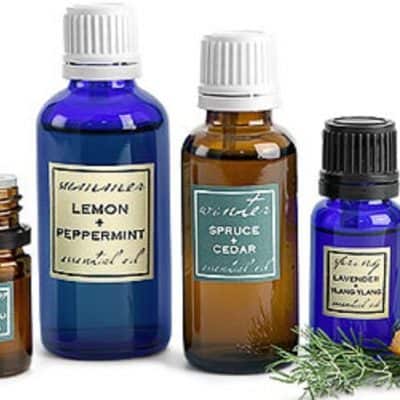
Angel’s Mist Aroma Remedy Blends
$ 19.95 -
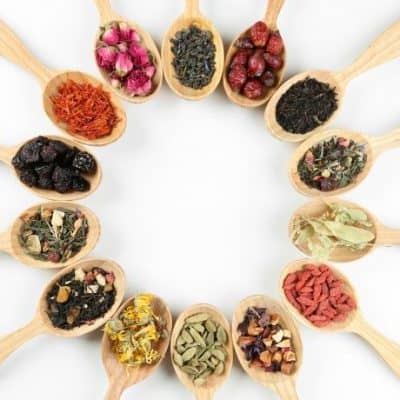
AromaThera-Teas by the Pound
$ 29.95 -
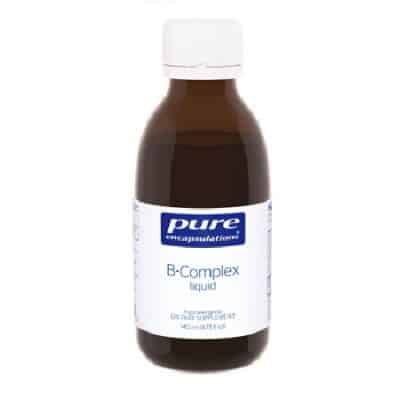
B-Complex Liquid
$ 29.95 -
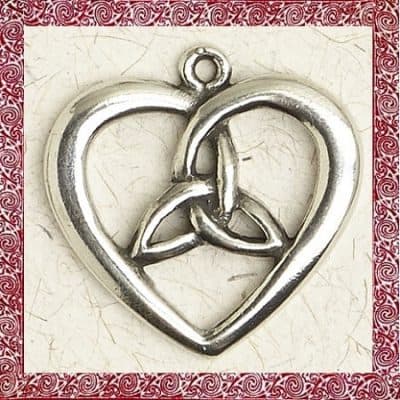
Celtic Serenity Heart Pendant
$ 21.95 -

Circulatory Health
$ 21.95 -
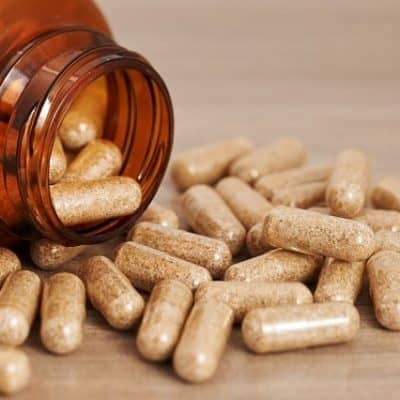
Circulatory Health Formula
$ 38.00 -
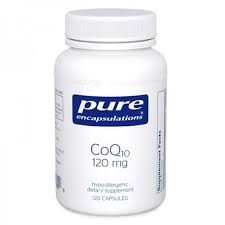
Coenzyme Q10
$ 59.95 -
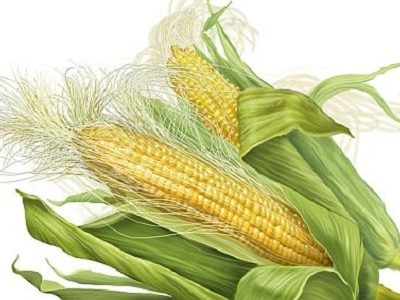
Corn Silk Tincture
$ 19.00 -

Flaxseed Oil Gel Caps
$ 19.95 -
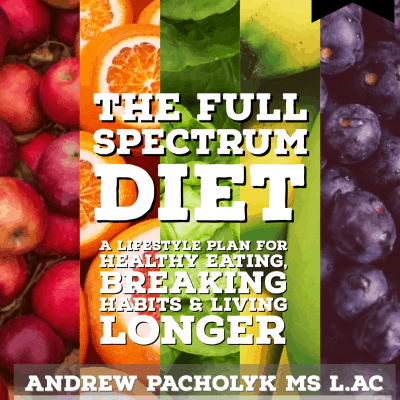
Full Spectrum Diet and Kit
$ 39.95 -
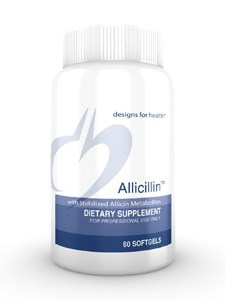
Garlic Allicillin™ 60 gels
$ 29.95 -
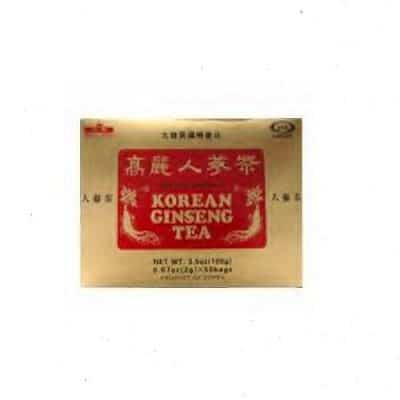
Ginger Tea Granules
$ 8.95 -
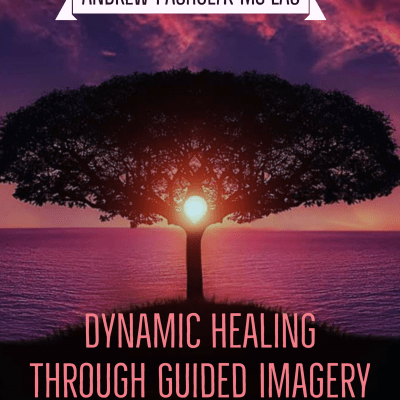
Guided Imagery Course
$ 279.95 -
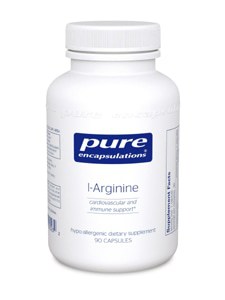
L-Arginine
$ 21.00 -
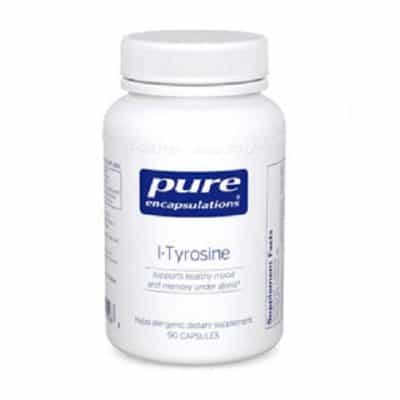
L-Tyrosine
$ 24.95 -

Male Performance Formula
$ 42.00 -
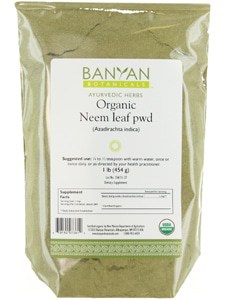
Neem Powder 1/2 lb (Certified Organic)
$ 19.95 -
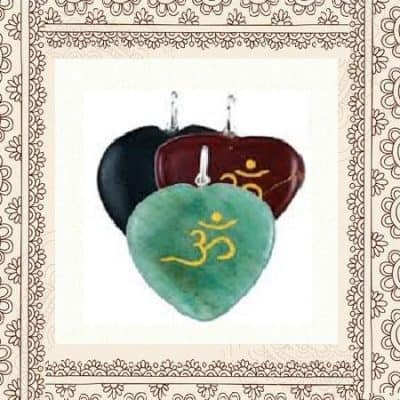
OM Stone Heart Pendant
$ 9.95 -

Pro-Omega-3 120 Lemon
$ 49.95 -

Pro-Omega-3 60 Lemon
$ 28.00 -
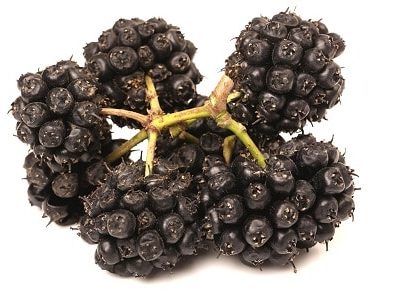
Siberian Ginseng Tincture
$ 19.00 -
Sale!
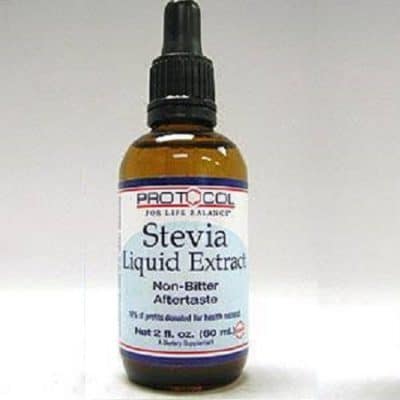
Stevia Liquid Extract
Original price was: $ 14.00.$ 11.95Current price is: $ 11.95. -
Sale!

Stop Smoking Kit
Original price was: $ 49.95.$ 44.95Current price is: $ 44.95. -
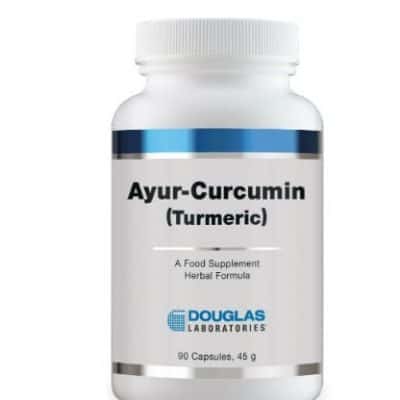
Turmeric (Curcumin) 300 mg 90 caps
$ 29.95 -
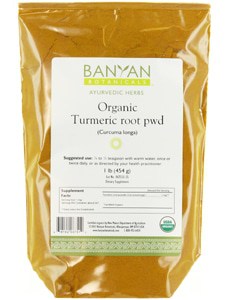
Turmeric Powder 1 lb (Certified Organic)
$ 29.95 -
Sale!
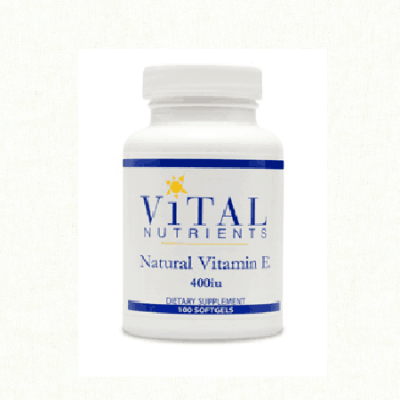
Vitamin E
Original price was: $ 21.95.$ 19.95Current price is: $ 19.95.
Herbal Remedies
Herbal medicine is a wonderful preventative solution. Complications can arise when taking herbal medicine and allopathic drugs your doctor has prescribed. Great caution should be used especially if you are on blood thinners, diuretics or any other heart related medication. Consult your doctor with any questions you may have, before taking additional herbs or supplements.
Bilberry: Bilberry fruit contains chemicals known as anthocyanosides, plant pigments that have excellent antioxidant properties. They scavenge damaging particles in the body known as free radicals, helping prevent or reverse damage to cells. Consider using for Atherosclerosis. Animal studies have found that anthocyanosides may strengthen blood vessels, improve circulation, and prevent the oxidation of LDL (bad) cholesterol, a major risk factor for atherosclerosis (plaque that blocks blood vessels, leading to heart attack and stroke). Research in people is needed. Also used for Chronic venous insufficiency. Bilberry extracts are used to treat this condition, which occurs when valves in veins in the legs that carry blood to the heart are damaged.
Blessed Thistle: Strengthens the heart. Also known as “St. Benedict Thistle” and “Holy Thistle”, this herb contains B-complex, calcium, iron, manganese and cincin. This herb has been used to tonify the heart, improve circulation and fight plaque.
Cayenne Pepper: is renowned, not only for healing the entire digestive system, and for arthritic pain relief, but also for the heart and circulatory system. It acts as a catalyst and increases the effectiveness of other herbs when used with them. Cayenne has been known to stop heart attacks within 30 seconds. Cayenne has a high source of Vitamins A & C, has the complete B complexes, and is very rich in organic calcium and potassium, which is one of the reasons it is good for the heart. Consider the synergy of taking both cayenne and Hawthorne berry together. Cayenne is also linked to decreases in cholesterol and blood pressure and the general maintenance of a health circulatory system.
Corn silk: Natural diuretic. Corn silk is used as a tea. the potassium in corn silk helps to offset potassium loss which is caused by increased urination. Compared to other diuretics, corn silk reduces the likelihood of muscle cramps and irregular heartbeat due to a loss of electrolytes by increasing urination.
Garlic: A rich source of potassium, zinc, selenium, vitamin A and Vitamin C, is commonly used to fight infection, increase circulation and help prevent cardiovascular disease. Consider eating raw garlic every day; since it is a very effective antifungal agent, or use it in tincture form. Research has shown that garlic is an anti-cholesterol remedy and is recommended for heart and circulatory problems. This is a wonderful natural antibiotic and detoxifier which protects the body against infection by enhancing immune function, as well. Garlic supplement, can be taken in pill form 2 to 3 times a day. Garlic tincture can be taken under the tongue, 2 to 3 times a day.
Ginkgo Biloba: is a known fighter or cerebro-vascular disease. Impaired circulation to the brain, often called a stroke, can cause severe and far-reaching effects on the entire body. Ginkgo has been shown in numerous studies to cause dilation and increase the blood flow in the arteries, capillaries and veins. In addition, they inhibit platelet aggregation, reduce blood clotting and work through antioxidants to protect our vascular walls from free-radical damage.
Goldenseal: Berberine, an active ingredient of goldenseal, can dilate blood vessels. Therefore, it may prove useful in the treatment of certain causes of both irregular heartbeat and heart failure. Do not use goldenseal for more that seven days at a time. Seven days off/seven days on.
Gotu Kola: This herb has a positive effect on the circulatory system as it strengthens the heart and helps lower blood pressure. It improves the flow of blood while strengthening the veins and capillaries. It has been used successfully to treat phlebitis, leg cramps, and abnormal tingling of the extremities.
Green and White Tea: Green and white teas are rich sources of polyphenols, including epigallocatechin gallate (EGCG). Of all the teas, white tea (the budding phase of Camellia sinensis) is the most highly prized and least processed. Upon harvesting, the leaves and buds are quickly steamed and dried to prevent oxidation of the delicate polyphenols. According to major university data bases, green tea contains at least 51 phytonutrients shown to promote a healthy inflammation response, confer profound cardiovascular and cellular protection, support detoxification, and support a healthy metabolism.
Hawthorn Berry: a member of the rose family, was recognized by physicians in the early 1800s for its ability to treat disorders related to circulation and respiration (breathing). Considered a “cardiotonic” herb, the flowers and berries of the hawthorn plant have been used in traditional medicine to treat irregular heartbeat, high blood pressure, chest pain, atherosclerosis, and congestive heart failure. Hawthorn berries contain large amounts of bioflavonoids, which help dilate and strengthen the walls of blood vessels, relax arteries, and improve circulation of blood to heart muscles. studies suggest that Hawthorn berry extract improves heart function and exercise capacity in those with CHF. Participants in research trials also report significantly improved symptoms (like reduced shortness of breath and fatigue). Hawthorn extract may even prove to be as effective as low doses of ACE inhibitors (a leading class of heart medication) in improving symptoms of congestive heart failure. Hawthorne must be taken daily to be affective.
Norwegian Kelp: Helps to clean and maintain the arteries. Some animal studies show kelp may help reduce cholesterol and blood pressure. On the other hand, kelp is also high in sodium, which may raise some people’s blood pressure. Salt-sensitive individuals with high blood pressure should not consume large amounts of kelp. Others may include the herb in a comprehensive heart-disease prevention program.
Motherwort: Improves blood flow circulation and reduces heart blood pressure and palpitations. The glycosides appear to have a short-term ability to lower blood pressure and reduce blood platelet aggregation. As a cardiac tonic, it is said to reduce heart palpitations. This herb strengthen the heartbeat without increasing the pulse rate as it sedates the coronary arteries. This results in increased circulation to the heart.
Olive Leaf: Naturally support the circulatory and immune systems. Based on a recent study published in the medical journal, Nutrition, Metabolism & Cardiovascular Diseases, polyphenols from olive leaf extract, significantly inhibited platelet aggregation in the laboratory. This has important benefits as the antiplatelet effects in olive leaves may offer a degree of protection from thrombosis and other cardiovascular diseases.
Rhodiola: Extracts from the root of rhodiola have been the subject of intensive pharmacological and clinical investigations in Russia and Scandinavia for more than thirty-five years. The results of these studies strongly support the use of Rhodiola as an adaptogen: a substance that normalizes physiology in response to stressors. As such, Rhodiola provides a solid foundation for restoring and maintaining health. It promotes cognitive and physical performance, supports positive emotional states, immune function and cardiovascular health, and restores balance to the hypothalamus-pituitary-adrenal (HPA) axis.
Rosemary: Is considered a heart tonic. Rosemary is also linked to decreases in cholesterol and blood pressure and the general maintenance of a health circulatory system. Traditionally, the herb has been used to ease muscle pain and spasm, support the circulatory and nervous systems, improve memory and stimulate hair growth.Rosemary tea, which can be made from fresh or dried leaves, offers impressive health benefits.
Herbal Teas
In a stainless steel pot, boil desired amount of water. The moment it boils turn the heat off. Add the following herbs in an infuser, muslin bag or tea ball for a single cup or add one-three teaspoons of herbs per cup for larger amounts.
Allow the herbs to infuse for up to 5 minutes. Drink 3-4 cups a day. For flavor-add lemon and sweeten with Stevia or organic honey. These herbs are helpful for gently cleanses, purifying, detoxing, anti-inflammatory. This powerful formula will help remove accumulated toxins in the body. Strong antioxidant, cleanses the colon and stimulates circulation.
Heart Tea – For those who like to keep their heart strong. Dilates the coronary blood vessels, helps lower cholesterol, and restores the heart muscle. Also good for bacterial infections, bladder, kidney, and prostate disorders. Nettle, Red Clover, Alfalfa, Hawthorn Berry, Siberian Ginseng, Fo-Ti, Gingko, Clove, Dang Gui.
Stop Smoking Tea – Reduces cravings for nicotine. Helps with balance and food cravings. Clears congestion, has a mild antiseptic and reduces swelling by helping to reduce blood flow. Spearmint, Lobelia, Kudzu, St. John’s Wort, Peppermint, Marshmallow Root, Mullen, Licorice Root, Stevia, Clove, Eucalyptus, Orange Peel.
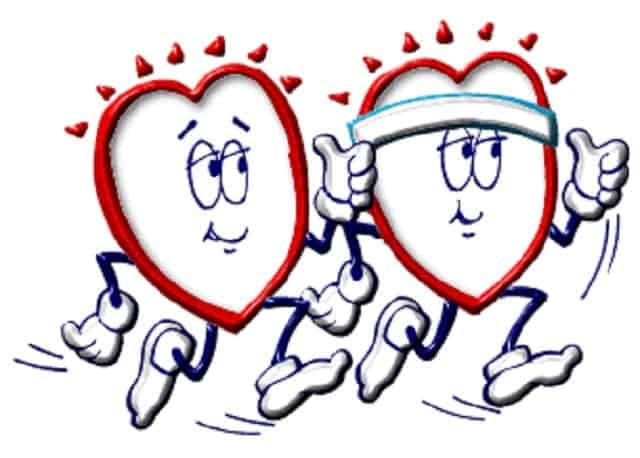
Exercise
Exercise is very important on so many levels. Related to heart health, exercise must be done to:
Increases HDL (the good cholesterol)
Improves function of the immune system
Burns fat
Mobilizes fat
Assist in digestion of foods
Increases energy level
Decreases fatigue
Builds and maintains lean body mass
Helps control appetite
Improves oxygen delivery to the cells
Increases blood supply
Improves exercise endurance and recovery
Improves sleep
Improves ability to cope with stress
Helps relieve depression, tension, and anxiety
Increases muscle strength
Increases muscle and joint flexibility
Increases strength of bones and connective tissues
Exercise should include cardiovascular aerobic activity 3- 4 times weekly. Weight baring exercise for 30 minutes to strengthen and maintain bone and muscle mass.
Exercise that promotes endurance (aerobic exercise such as brisk walking, bicycling, and jogging) or muscle strength (resistance training with free weights or weight machines) helps prevent coronary artery disease. People who are out of shape or who have not exercised in a long time should consult their doctor before they start an exercise program.
Your doctor can provide a safe and effective exercise plan based on your degree of heart disease and how well you do on tests that check the strength and function of your heart. DO NOT exercise on days that your weight has gone up from fluid retention (edema) or you are not feeling well.
Herbal Combinations and Formulas
Herbal tinctures are concentrated liquid extracts of the medicinal properties of herbs. Shake the tincture bottle well. As a dietary supplement, place 1 to 3 droppers full ~ approximately 1 tablespoon or 40 drops, under the tongue, or in juice or water as needed, 2-3 times a day.
Blood Purifier: Pau D’ Arco, Red Clover, Yellow Dock, Burdock, Sarsaparilla, Dandelion, Cascara Sagrada, Buckthorn.
Circulation Support: Hawthorn berries, Ginger, Angelica, Bayberry Bark, Hyssop, Prickly Ash bark, Cloves, Cayenne.
Heart Support: Hawthorne Berry, Motherwort, Comphrey root, Ginger, Tienchi Ginseng, Horsetail.
Echinacea & Goldenseal: Echinacea & Goldenseal.
Aromatherapy Remedies
Aromatherapy can help sooth the heart, calm the nerves and slow a rapid pulse. As always prevention is the key. Maintaining the condition of our heart is important, no matter if you are working with a healthy heart or have had a stroke, high blood pressure, congestive heart failure…aromatherapy can help! Helpful, are essential oils of Clary Sage, Bergamot, Geranium, Ginger, Lemongrass, Neroli, Rose and Rosemary and are all beneficial for the heart.
You can find essential oil remedy recipes by clicking here.
Bergamot: helps soothe frustration and anger. This citrus oil helps those regain self confidence, who have lost it and uplifts and refreshes the Spirit. Bergamot has a reputation that evokes joy and warms the heart.
Clary Sage: The heart-shaped leaves of Clary Sage is considered an antispasmodic oil, can decrease heart rate and is considered mildly hypotensive.
Geranium: The fuzzy heart-shaped leaves of Geranium may also be an indicator that this fragrant oil is used to improve the circulatory system. Geranium is also known to soothe an agitated heart.
Ginger: This rich, spicy oil so often used for nausea also helps normalize blood pressure either by raises blood pressure by restricting external blood flow, or lowers it by dilating surface blood vessels.
Lemongrass: This oil contains five different compounds that inhibit blood clotting.
Neroli: Studies show that just inhaling Neroli can lower high blood pressure. Stress-related heart problems respond well to this fruity oil.
Rose: A gentle Heart tonifier, Rose’s psychological properties play mostly upon it effects on the mind. The mind, which is the center of our emotional being, extends it’s energy to the heart. Rose oil calms, nourishes and supports the heart and helps restore a sense of well being. Rose oil can be very beneficial in helping with anxiety, palpitations and insomnia. The compassion of the Rose is seen through it’s ability to heal emotional wounds. When loss, rejection or sorrow has injured our capacity for nurturing and self love, Rose oil brings a sweet and gentle comfort, binding the “heart strings” from the Heart to the Mind.
Rosemary: Studies show that this oil improves general circulation.

Improving Circulation
Blend these wonderful oils together to create a special bath for improving over all circulation. You can also create a massage blend to massage over the heart, arms and legs to increase circulation, improve mood and lift your heart-spirit!
3 drops Geranium essential oil
2 drops Ginger essential oil
3 drops Rose essential oil
Directions:
Mix these together and use 5 to 10 drops of this combination in a bath.
OR
Increase Ginger to 11 drops, Geranium to 8 drops and Rose to 11 drops and add to 4 ounces of carrier oil. Massage over the heart area as well as your arms and legs.
Not a DIY (do it yourself-er) try Andrew’s Aroma Remedy Blends:
~ 3 times a day, morning, noon and night, utilize these blends of essential oils:
Angel’s Mist Heart/Circulation Rub Remedy Blend
Angel’s Mist Heart Massage Remedy Blend
Angel’s Mist Heart Inhalant Remedy Blend
Top Supplements for Heart Health
Arginine or L-arginine is one of the best known natural supplements used for cardiovascular disease. The most common explanation for its cardiovascular benefits has to do with L-arginine’s affect on nitric oxide. L-arginine is a substrate for the enzyme nitric oxide synthase (NOS). The enzyme converts L-arginine to nitric oxide. This leads to vasodilation, improved coronary endothelial function, and increased coronary blood.
Aspirin Therapy can help prevent a heart attack or clot-related stroke by lowering the clotting action of the blood’s platelets. Long term use of aspirin may also cause unwanted side effects, such as stomach bleeding, bleeding in the brain, kidney failure, and other kinds of strokes. There may be a benefit to daily aspirin use if you have some kind of heart or blood vessel disease, or if you have evidence of poor blood flow to the brain. Consult your doctor before you begin any aspirin therapy regimen.
B Complex is a multifunctional blend of the highly crucial vitamins including B-2, B-6, B-12, Niacin and Pantothenic acid to help maintain a sufficient daily intake. These vitamins are essential for normal formation of blood cells, and also support vision health, a healthy nervous system and energy metabolism and considered nourishing for the heart.
Carnitine or L-carnitine supplements may reduce your chances of developing heart failure after a heart attack and improve exercise capacity if you already have heart disease. Carnitine is a nutrient that helps the body convert fatty acids into energy. This energy, in turn, is used primarily for muscular activities throughout the body.
Coenzyme Q10 (CoQ10) is one of the most important heart health supplements. Also known as ubiquinone, ubidecarenone, coenzyme Q, the essential nutrient Coenzyme Q10 is a necessary component of cellular energy production and respiration. It is a component of the mitochondrial electron transport system which supplies the energy required for a variety of physiological functions. Co Q10 provides support to all cells of the body, and is especially supportive of tissues that require a lot of energy, such as the heart muscle, periodontal tissue, and the cells of the body’s natural defense system. Co Q10 enhances energy levels in every cell in the body, providing increased energy and exercise tolerance, and optimal nutritional support for the cardiovascular system. CoQ10 seems to encourage energy production helping enzymes release energy in every cell, stimulates immune system function, improves heart function, enhances the production of cellular energy, and is a powerful antioxidant. Coenzyme Q10 is used to improved circulation. Improving circulation provides great benefit to heart health as it assists in improving the delivery of oxygen and nutrients to the heart. This allows the heart to work more effectively and contributes to lowering blood pressure. CoQ10 moves energy throughout the body, increasing the efficiency of cellular metabolism, regulates the heart beat and keeps oxygen in cells longer. Levels of CoQ10 are low in people with heart disease. Several research studies suggest that CoQ10 supplements can help reduce swelling in the legs, enhance breathing by reducing fluid in the lungs, and increase exercise capacity.
Creatine is a naturally occurring amino acid (protein building block) found mainly in muscles. Fifty percent of creatine in our bodies is ingested through the foods we eat while the other 50% is made in the liver, kidney, and pancreas. In a few studies of people with congestive heart failure, those who took creatine (in addition to standard medical care) had significant improvement in symptoms and exercise capacity compared to those who received placebo.
Fiber: Found naturally in fruits, grains, vegetables, and legumes, fiber cuts down the amount of cholesterol your body soaks up from food. Try to get at least 25 to 30 grams of it every day. Men less than age 51 should aim for 38 grams a day. It’s best to get your daily dose from your diet, but supplements are another option. There’s good evidence that blond psyllium husk — common in fiber supplements — can lower “bad” LDL cholesterol. It can also raise the “good” kind, HDL. Other fiber supplements include methylcellulose, wheat dextrin, and calcium polycarbophil.. If you take a fiber supplement, increase the amount you take slowly. This can help prevent gas and cramping. It’s also important to drink enough liquids when you increase your fiber intake.
Garlic. Not only does it make just about anything taste delicious, it could also slightly lower blood pressure. It may slow the buildup of plaque in your arteries, lowering your risk of blood clots. Research shows that both garlic in food and in supplements may help.
Omega 3 Fatty Acids: A diet high in fish oil (omega-3 polyunsaturated fatty acids) decreases risk. Omega-3 fatty acids help lower cholesterol, may help reduce the risk of irregular heart rhythms and may also improve certain factors, like high blood pressure. Fish oil is full of omega-3 fatty acids, it can slash levels of triglycerides,which are an unhealthy fat in your blood (by up to 30%). It may also improve blood pressure. But it’s not clear if non-prescription fish oil supplements lower your risk of heart attack and stroke. Your best bet may be to eat fish with omega-3 fatty acids. The American Heart Association recommends that all adults eat at least two 3.5-ounce servings of fish a week.
Sterols and stanols. Find these in foods like nuts and grains, or you can buy them as supplements. They reduce the amount of cholesterol that your body absorbs from food. They’re also added to many foods, such as some margarine, orange juice, and yogurts. Experts recommend 2 grams a day to help lower LDL cholesterol.
Vitamin C scavenges free radicals and cleans up waste products. In addition to its anti-oxidative activities, vitamin C benefits many other body functions and helps lower blood pressure and cholesterol and has been shown to help prevent stroke and heart attacks.
Vitamin E occurs in nature as eight structurally similar vitamers (alpha-, beta-, gamma-, delta-tocopherol and tocotrienol) possessing different anti-oxidant potentials and biological activity, especially for the heart.
Nutritional Advise
Eat heart healthy foods. These foods include non meat sources of protein (grains, tofu, nuts), fish, poultry, lean meat (35-60 grams per day), skim or low-fat milk, cottage cheese, margarine (non hydrogenated), that is high in vegetable oils (such as corn, cottonseed, safflower, sunflower, sesame, or soybean). Also onions, garlic, chickpeas, fresh vegetables and fruit.
Eat a handful of nuts each day. About an ounce of nuts a day raise the good cholesterol levels (HDL) and decrease inflammation. Nuts are rich in healthy Omega 3 fatty acids, protein and fiber.
Eat tomato sauce. Tomato sauce is loaded with lycopene and potassium. Potassium is a mineral rich in blood pressure lowering benefits! Eat 10 tablespoons of tomato sauce a week (preferably without the pasta).
Read your food labels. Get rid of any food that has sugar listed in the first five ingredients! Sugar is a cause of inflammation.
Look at sodium content. Sodium levels should not exceed 2,300mg/day.
Look at fat content. Fat should be limited to no more than 30% of total daily calories. Saturated fat should be limited to 7%
Avoid palm or coconut oil.
Water should be a very important part of any nutritional program. 6-8 8 ounces per day. Water allows for the cleansing and free flow in the system.
Decrease (excessive) coffee and other beverages that contain caffeine. Try one (great) cup of coffee a day, instead of four. I advocate up to 24 oz of coffee a day (for most people).
Take dietary control over high fat, high cholesterol and high saturated fat intake.
Eat colorful fruits and vegetables each day. Consider the Full Spectrum Diet, which includes: phytochemicals (7-9 servings of fruits and vegetables daily), 30 grams of fiber, flavinoids (found in red and purple grapes, red wine and black tea).
Pomegranate (Punica granatum) and pomegranate juice is now becoming a popular healthy drink. Pomegranate juice has polyphenols that work as antioxidants. There are more of these healthy polyphenols in pomegranate juice than in green tea, orange juice, or red wine.
Limiting the amount of fat to no more than 25 to 30% of daily calories is recommended to promote good health. However, some experts believe that fat must be limited to 10% of daily calories to reduce the risk of coronary artery disease.
A low-fat diet also helps lower high total and LDL (the bad) cholesterol levels, another risk factor for coronary artery disease.
The type of fat consumed is important. There are three types: saturated, monounsaturated, and polyunsaturated.
Saturated fats are found in meats, non-skim dairy products, and artificially hydrogenated vegetable oils. The more solid the product, the higher the proportion of saturated fats.
Monounsaturated fats are found in olive oil and canola oil.
Polyunsaturated fats include omega-3 fats, contained in deep-sea fatty fish (such as mackerel, salmon, and tuna), and omega-6 fats, contained in vegetable oils. The ideal combination of types of fats is unknown. However, a diet high in saturated fats is known to promote coronary artery disease, and a diet high in monounsaturated or omega-3 fats is less likely to do so. Therefore, eating fish regularly is recommended.
A high-fiber diet is also recommended. There are two kinds of fiber.
Soluble fiber (which dissolves in liquid) is found in oat bran, oatmeal, beans, peas, rice bran, barley, citrus fruits, strawberries, and apple pulp. It helps lower high cholesterol levels. It may decrease or stabilize high blood sugar levels and increase low insulin levels. Therefore, soluble fiber may help people with diabetes reduce their risk of coronary artery disease.
Insoluble fiber (which does not dissolve in liquid) is found in most grains and grain products and in fruits and vegetables such as apple skin, cabbage, beets, carrots, Brussels sprouts, turnips, and cauliflower. It helps with digestive function. However, eating too much fiber can interfere with the absorption of certain vitamins and minerals. Increase soluble fiber with one teaspoon to one tablespoon of soluble fiber containing guar gum, psyllium husks, flaxseeds or pectin and mix in an 8 oz glass of water two times per day on an empty stomach.
Eating soy products, such as tofu and tempeh (not fried), also seems to reduce the risk of coronary artery disease.
Pure Energy Smoothie with Green Powder contains Soy Protein Powder, Bee Pollen Powder, Psyllium Husks, Lecithin Powder, Chlorella, Spirulina, Klamath Blue Green Algae, Barley Grass, Wheat Grass, Alfalfa, Kelp, Acidophilus, and American Ginseng. Just add 1 tablespoon powder to your favorite juice for a delicious and nutritious high energy start to your day.
Homeopathy
This medical system uses infinitesimal doses of natural substances to stimulate a person’s immune system and body’s natural defenses. Homeopathic remedies are named for the plant or animal ingredients they are made from. Homeopathy not only offers relief from temporary disorders but, can provide long term healing of a person due to its individual and “holistic” approach. This type of healing makes it easier and possible to avoid recurrence or relapses in the future and homeopathy stimulates the body’s natural defense system by reestablishing normal immune system and cell functioning.
As an Adjunct Therapy:
Aconitum napellus: Useful when you are anxious and impatient. You imagine the worst happening. You feel that a strong pain envelops the heart and left arm. The problem is worse at night and when you are warm, and feel better with rest and fresh air.
Argentum nitticum: Useful when you are impulsive and fearful. Chest pain is stronger at night, after eating and with stress.
Baryta carbonica: Useful when you are suffering from hypertension, palpitations and confusion, made worse with exposure to dampness or cold.
Cactus grandiflorus: When you are sad and in great pain. The pain seems to be “squeezing” the chest, making it difficult to breathe. You feel worse around noon and with exertion, but better with fresh air.
Crataegus: Is a general remedy that helps regulate the heart.

The Full Spectrum Diet
As a Nationally Certified Herbalist and Licensed practitioner of Acupuncture and Chinese Medicine, Andrew Pacholyk, MS, L.Ac. has spent years developing a natural healthcare plan, which incorporates the benefits of fresh, full spectrum foods based on their color and their properties. A balance of attractive colors in the foods you eat, play an instinctual part as to what the body needs in the moment. The color energy of fruits, vegetables, vitamins and minerals all come into play when furnishing your body with the proper nourishment.
This easy to use system monitors healthy weight by the colors of food on your plate!
The Full Spectrum Diet is based on the proponents of color therapy and the holistic principles of eating mindfully, eating to nourish the body and seeing food in a more natural and spiritual way. Meals rich with different colored fruits, vegetables, meat, chicken, fish and whole grains means you are getting a healthy variety of nutrients that your body needs.
It is a simple way to eat healthy in order to achieve healthy results! Want to know more?
Traditional Chinese Medicine
Traditional Chinese Medicine (TCM) is the oldest, continually practiced, and professionally administered health care system in the world. It is a documented medical system spanning over 2,500 years based on comprehensive philosophies, rational theories, clinically tested and empirically verified by over 100 generations of highly educated practitioners.
Chinese Medicine is a total system of internal medicine, which is comprised of a diagnostic procedure based on signs, symptoms and treatment styles including acupuncture, herbal medicine, exercise, diet and meditation. It’s foundation is based on the principles of balance; the interdependent relationship of Yin and Yang. Through this balance, health is achieved and maintained.
The Heart is looked at as the dominant organ for mental activity. It is believed that all information is preserved and processed through the heart. Loving or unloving emotions are centered in the heart. When the emotions become imbalanced, the Spirit can become agitated; once the Spirit becomes agitated, the whole heart system goes out of balance.
The heart is said to house the Spirit, otherwise considered The Shen, in TCM. The Shen refers to the function of processing all incoming sensory and intuitive information and supervising the body/mind reaction to it; associated with the heart.
Acupuncture and Traditional Chinese Medicine has been shown to significantly increase your heart health. Since many factors around heart disease involve lifestyle issues, you can take charge of your health and reduce your risk of heart disease by as much as 80% when using acupuncture. When a person has a heart attack the pain often extends along the arms. This indicates that both on a physical and emotional level the heart, arms and hands are linked. The contact point for the heart is the palms of the hands. The Heart Channel runs along the inside of the arms.
In Traditional Chinese Medicine, the heart is the Emperor of the human body. The heart corresponds to the emotion of joy. Regular expressions of joy and creativity are important for a healthy and functioning heart.
As poetic as this is, true physical signs of agitation, insomnia, anxiety and the inability to feel joy, can occur. Chest pain, heart palpitations, an irregular heart beat, excessive dreaming, poor long-term memory, as well as, psychological disorders are complications a heart imbalance. Heart disease can present with two distinct signs: dyspnea (difficulty breathing) and/or angina or chest pain. Other signs include arrhythmias, orthopnea, weakness and fatigue. Risk factors include high cholesterol, smoking, genetic pre-disposition, obesity, a sedentary lifestyle, hypertension, alcoholism, diabetes mellitus, hypothyroidism.
DIY Acupressure Points for Maintaining Heart Health
There is no substitute for a professional acupuncturist who has studied medicine for 5 years in order to get a license and Acupressure is not meant to be used as a treatment for heart attack. If you suspect a heart attack, seek emergency medical treatment immediately.
Here are some great points that you can press deep and massage to help bring some joy to your heart!
Pericardium 6 "Inner Gate"
Pc 6 is located on the palm side of your wrist, two thumb widths above the wrist crease in the center of the arm.
You can stimulate this point with your thumb, or by curling one hand around the opposite wrist and using the middle finger. Use moderate to firm pressure. Build up the pressure gradually; hold for a minute, and then gradually release the pressure. Do the acupressure on both of your hands.
The combination of the points Li 4 and Lv 3 (described below) is a famous combination known as “the four gates.” It is important for the circulation of ch’i through the entire meridian network. This controls physical and also emotional health. By breaking up stuck energy, it helps balance and harmonize us emotionally, which has a direct benefit on maintaining a healthy heart.
Heart 7 "Mind Door"
Ht 7 is located on the palm side of your hand, on the wrist crease, directly below your little finger. To find it, locate the bony knob on the outside of your left wrist (the little finger side). Ht 7 can be found just next to that, in a small indentation.
Stimulate this point by pressing on it for 30 seconds with your thumb. Now, release the pressure gradually. Repeat on the other hand.
Liver 3 "Bigger Rush"
Lv 3 is located on the top of your foot, between the big toe and second toe.
Start at the web margin of skin between the two toes. Now slide your index finger up between the bones until you feel a depression about 1/2 inch up.
Using your index finger, press between the bones. Start with light pressure. Increase the pressure gradually as much as you can tolerate or until you are using moderate to firm pressure. Press for about 1 minute.
Large Intestine 4 "Adjoining Valley"
To find this point, holding your left hand palm down, and fingers pointing out straight, squeeze your thumb against the other fingers. LI 4 is located in the middle of the fleshy mound that pops up between the thumb and index finger.
With your left hand facing down, use your right hand (thumb on top, index finger underneath) to take hold of the webbing between your left thumb and index finger. Squeeze in the center of the webbing, pressing toward the bone of the index finger. Hold one minute, and repeat with the other hand.
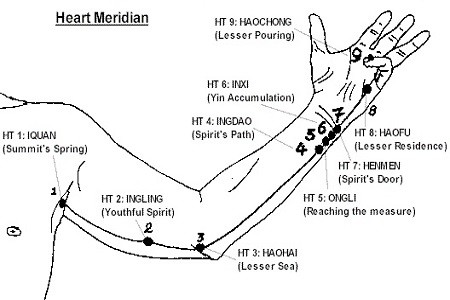
Acupuncture and Heart Health
Acupuncture can help with these heart related situations:
1. Stop Smoking: Smoking is a major cause of coronary artery disease. 20% of all deaths from heart disease are in direct correlation to smoking. As an acupuncturist, I have used the NADA protocol (National Acupuncture Detoxification Association) for controlling nicotine addiction and dependency on hundreds of patients. It has shown to be very effective for those who complete the program. Not to mention great results with stress reduction. The addition of acupuncture into the treatment for addiction seems to be very beneficial, and almost the single ingredient that helps the protocol succeed.
2. Control High Blood Pressure: Acupuncture has been found to be very helpful in lowering blood pressure. Research has been done at the Susan Samueli Center for Integrative Medicine at the University of California in Irvine. The main factor in most cases of high blood pressure is an increase in resistance to blood flow. This can occur if the diameter of your arterioles becomes smaller. Your heart has to work harder to pump the same amount of blood, and the pressure at which the blood is pumped increases. The research done at the University of California was shown to stimulate the release of opioids. This decreases the heart’s over activity and the need for more oxygen. This, in turn, lowers blood pressure.
3. Helps With Insomnia: There is a strong correlation between insomnia and poor heart health. It is a complicating factor in many of the risks for heart disease. Research has shown that peaceful, uninterrupted sleep is needed for good heart health. Acupuncture is extremely effective for a wide range of sleep issues. Acupuncture works along the vegus nerve. The vagus reflex or vagus means “wanderer” and that is exactly what these nerves are. Attached to the brain, these nerves wander through the base of the skull into the neck, the right and left vagus nerves innervate through their branches a widespread range of body parts, from the head down to the abdominal organs. Activation of the vagus nerve typically leads to a reduction in heart rate, blood pressure, or both. This is one of acupuncture’s main mechanisms for treating not only insomnia, but a whole host of other disorders.
4. Maintain A Healthy Weight: Obesity has a direct link to coronary artery disease, as well as high blood pressure and diabetes. Studies have shown that BMI or our body mass index of 40 or more indicates morbid obesity, which increases a person’s risk of death from any cause by 50% to 150%. Being overweight still places you at a greater risk of developing heart disease. Acupuncture and herbal medicine is an exceptional tool when it comes to your weight loss goals. Acupuncture helps to boost metabolism, increase absorption of minerals and nutrients, regulate elimination, suppress the appetite and reduce stress. Along with acupuncture and herbal medicine, diet, exercise and good quality sleep are the proponents of weight loss.
Ayurveda
The principle medical system of India is known as Ayurveda and is over 5,000 years old. This “Science of Life” is considered the art of living in harmony with nature. Developed from the ancient text of The Vedas, Ayurveda views the human body as a “homunculus” of our cosmic Universe, regulated by the balance between three primordial humours, call Dosha.
Your dosha are your Ayurveda mind and body type. There are three doshas in Ayurveda: Vata, Pitta, and Kapha. We each have all three of the doshas in our physiology, just in different proportions, so your dosha is unique and personal; it is like your fingerprint.
From the Ayurvedic perspective, the heart is the seat of prana (life energy), which is maintained by a delicate balance of agni (the solar energy element) and soma (the lunar energy element). Excess mental and emotional stress wastes away soma in the heart. The heart, is also the seat of ojas, the substance within us that maintains life and promotes bliss and longevity.
To protect and nourish the physical heart and the emotional heart, it is essential to promote both soma and ojas. Heart health is governed also by three sub-doshas: Sadhaka Pitta (emotional balance), Avalambaka Kapha (stability and strength) and Vyana Vata (blood flow and beat), which, though present everywhere in the body, has its seat in the heart.
Heart Tonics
Ginger is very good for the heart and the circulatory system because it promotes healthy circulation, vasodilation, and healthy sweating. Ginger also kindles agni, burns ama (toxins), and helps to clear the channels of the body (both subtle and physical). As we have seen, fresh ginger can be added to meals or used to make an herbal tea. Or if you prefer, ginger powder and ginger liquid extract are also available.
Turmeric supports the proper function of the heart and, like ginger, helps to clear the channels of the physical and subtle bodies. It also purifies the blood, strengthens digestion and helps to eliminate ama (toxins) from the digestive tract, which in turn supports the heart. This well-known golden spice can be added to food or taken alone for a wide range of health benefits. Turmeric is available as a powder, in tablet form, and as a liquid extract, so choose whichever product is right for you.

“The Ten Vessels”
The heart is also the root of an important set of subtle energetic pathways described in the Vedic texts—the ten great vessels (which happen to be intimately connected to mano vaha srotas and rasa vaha srotas, above). Of the ten, three are said to be the most important. These three travel from the base of the spine to the crown of the head, intersecting at each of the seven Chakra and form an important part of the subtle body.
Support Your Heart
The following therapeutic strategies support heart health by:
- Reducing stress.
- Supporting mental and emotional well-being.
- Clearing the bodily channels and energetic pathways (srotamsi and nadis).
- Promoting the healthy flow of prana throughout the system.
- Kindling agni.
- Clearing ama.
- Improving tissue nutrition.
- Supporting ojas.
Emotional Aspect:
There is an emotional aspect to every illness. Often times, it is the emotional thoughts or “excess emotions” that will lead to illness. The following therapies are utilized for calming the mind, help with stress relief and focuses on our mental powers over any situation. The ability to balance your emotional, mental, physical and spiritual self are exceptional tools on your healing journey. Here are some suggestions:
The romantic view of the human heart invokes love transcending all obstacles and unconditional love that truly expands the boundaries of the human heart. When romantic philosophy speaks of the heart, it speaks of things that lie at the very center of what it means to be human.
… our heart health is a make up of family history, genetics and how we physically respect ourselves through the exercise we get, the food choices we make and they way we treat ourselves.
Program thought to be positive and your energy will reflect it! Put your intention into taking care of your heart (awareness) and results will follow!
Stress and the Heart
Open Your Heart!
-
- Harvest Unconditional Love… love that does not judge, but embraces.
- Positive Emotions and Attitudes reduce stress and promote a healthy heart.
- Be Humble: Be Loving and Compassionate to all Mankind.
- Do things in a casual way: Speak softly. Avoid anger. Indulge in whole-hearted laughter.
Stress reduction is very important in heart disease. This is a situation that must be addressed. Stress related issues are responsive to counseling and to a wide variety of psychotherapies. During the past several decades, there has been an increasing enthusiasm for focused, time-limited therapies that address ways of coping with stress and it’s symptoms directly, rather than exploring unconscious conflict or other personal vulnerabilities.
Trauma, post-traumatic stress and anxiety trigger a response from the body. Feeling threatened in areas of your life? This “perception” puts your body into a “fight or flight” mode of danger causing your body to always be ready to defend itself, creating stress, anxiety or even panic. When this happens, our bodies no longer regulate in a normal capacity but at a higher sense of defense and awareness, causing a reactionary response ~ such as anxiety.
Metaphysical Thoughts
The power of your mind and your belief system has everything to do with the condition, the speed and the way that you heal.
* Our Belief System is one of the major factors that can get us through situations or can cause our life to crumble around us! I do believe that there is a lot of innate goodness and balancing our minds do subconsciously to get us through hard times. The other portion of this is how we “program” ourselves to deal with any given situation.
* Our self-confidence and self-love are often the key to opening and strengthening this portion of our thoughts which in turn emanates from ourselves!
* Energy follows thought. Program thought to be positive and your energy will reflect it!
* Really appreciating what we DO have as opposed to what we would like to have, sometimes makes a significant difference. This is always an important element in healing that is often neglected.
Yoga Therapy
Yoga poses can be good alternatives to “traditional” health remedies because they relax the body and mind, improve circulation and respiration, reduce tension and help the body through it’s healing process.
Breath Work:
The Yogic breath exercise can be done without instruction, without danger, and with a good chance that your discomfort and stressful feelings will be reduced. Relaxation Breath is the most powerful tool for stress management.
Sit up, with your back straight in any position. Place your tongue against the ridge of tissue just behind your upper front teeth and keep it there throughout the exercise. Exhale completely through your mouth.
Close your mouth and inhale quietly through your nose to a mental count of four. Hold your breath for a count of seven. Exhale completely through your mouth, to a count of eight. Repeat this cycle three more times for a total of four breaths. Try to do this breathing exercise at least twice a day. You can repeat the whole sequence as often as you wish, but don’t do it more than four breaths at one time for the first month of practice. This exercise is fairly intense and has a profound effect on the nervous system.
Deep Diaphragm Breath
Sit with your legs crossed in a comfortable position. Breathe slowly and evenly from your diaphragm, through your nose. Fill your lower abdomen, lungs, then chest with air. Hold for a four count then slowly exhale the air out from your chest, lungs, then lower abdomen. Repeat 3 or 4 times. That’s it! Just allow your shoulders to drop and your face relax as you breath, deep.
Yogic asanas such as the Bridge pose (Setu Bandhasana) and Fish pose (Matsyasana) are two of my favorite poses for stimulating the Heart Chakra, strengthening the neck, upper and middle back, increasing circulation to the heart, spine and brain, stimulating the parathyroid and thyroid glands, as well as, the pituitary and pineal gland. These two poses are similar. The bridge pose presses through the legs and lifts the buttock in the air. The fish pose keeps your buttocks on the ground with your legs stretched out along the floor and you are arching the upper back with the elbows on the floor beside you. You can find these poses here.
Also consider Cat, Cobra, Laying Down Twist, Simple Inversion...
Color Therapy
When you are balanced, you can more effectively fight dis-ease, rid your system of toxins, as well as, negative patterns. You can achieve balance through the vibrational remedy and application of color. Color interacts with the human energy system in a unique way to stabilize physical, emotional, mental and spiritual conditions.
Light Therapy
Light therapy is now used for medical conditions, such as seasonal affective disorder (SAD). The most common method, called bright-light therapy, requires that patients sit near a special light box fitted with high-intensity, full-spectrum or white light bulbs. UV irradiation is also used to re-pigment skin affected by the autoimmune disorder vitiligo.
A research review commissioned by the American Psychiatric Association in Washington, D.C., concludes that in trials, daily exposure to bright light is about as effective as antidepressant drugs in quelling seasonal affective disorder (SAD), or winter depression, and other forms of depression.
Violet – This energy has the most intense electrochemical power. With this energy we have the gift and the possibilities that reach far beyond the physical plane. Violet is beneficial in the treatment of nervous and emotional disturbances, arthritis, acute cases of consumption and insomnia, especially due to palpitations. Experience the color violet now.
Green – is governed by the Heart Chakra. Green is the harmonizing, balancing energy. It has strong influences on the heart and blood supply. Green has much to do with the way you feel about yourself. It is associated with abundance and giving. It’s strong tie to nature is very important in order to be balanced, peaceful, harmonious. Experience the color green now.
Red – works in just the opposite way. Red stimulates the heart, raises blood pressure and improves circulation. Experience the color red now.
Determine what color you need. Learn more about your personal Color Therapy Analysis.
Crystal Reference
Crystals Associated with the Heart
For meditation and contemplative purposes, these gems have a long standing association with the heart and healing emotional matters of the heart energy! They have been used as adornments in clothing and on crowns, in armor and on breastplates and for the purpose of magic and healing. The colors of green and pink have been associated with the Heart Chakra and are considered balancing colors found in crystals that soothe the heart and release emotional blockage.
Aventurine is a member of the quartz family and has a concentrated ability to dissolve emotional blockage. It’s a particularly effective crystal for emotional healing and is especially helpful when worn for this purpose or placed on the heart center during Chakra balancing. It helps to balance the emotions, and is one of the best stones to wear or carry during stressful periods.
Emerald is a symbol of love and good fortune. This stone is used for abundance, growth, peace, harmony, patience, love, fidelity and honesty. It used against negative energy and has been used in many forms of divination. Most effective on the Heart Chakra perhaps because it access desires held deep within. Emerald provides inspiration and helps those in need of balance, healing, and infinite patience.
Jade is found in different colors, but green Jade has the ability to mellow one’s existence. Helps one rid themselves of negative thoughts and energy. Very beneficial to the heart in both physical and spiritual senses. It is a very protective stone and will keep its wearer out of harm’s way. Jade is a humbling stone.
Kunzite helps those who suffer from inner turmoil and helps to find the balance between reason and feeling. This heart soothing stone increases tolerance and the ability to deal with anxiety associated with criticism from others. This stone clears emotional debris and is exceptional for panic attacks.
Peridot is a warm and friendly stone. Helps understand relationships and other realities. This visionary stone helps connect us to our destinys and to an understanding of the purpose of existence. The more green the stone, it is used at the Heart Chakra, to clear a pathway, strengthening the breath of life, and the ideals of prosperity, growth, and openness.
Rhodochrosite is a gentle and yet probably the most vibrant loving stone to heal the Heart Chakra, especially for giving/receiving love. Rhodochrosite is the “Stone of Love and Balance”. Helps self-forgiveness, deservingness and trust issues, spiritual and self-love, desire to live and purpose.
Rhodonite is the “Stone of Love”! This stone symbolizes “self realization”. Rhodonite works with the Heart Chakra by soothing the heart center as well as the Root Chakra for grounding and balancing, due to the presence of black oxides in this stone. This balance of colors allows for a powerful and vibration for caring for one’s self. Rhodonite allows for confidence and self worth.
Rose Quartz represents love, beauty, peacefulness, forgiving, loving, self-love and emotional balance! Rose Quartz works with the Heart Chakra. It is a soft, gentle, soothing stone that warms the heart center. Helps diffuse negative stimuli and uncomfortable memories. Helps us discover the ability to love ourselves and makes us more open to other people.
Pink Tourmaline is used for emotional and spiritual love, healing loss, emotional pain, fear and self-gentleness. Best in combination with counseling. Most powerful together with Kunzite or Rhodocrosite. This stone helps us with discovering self-love, compassion and releasing of old hurt. Use for trust.
Unakite is a fulfilling stone. We often think of the emotions as originating and residing in the heart, but another place where they live, often imprisoned, is in the solar plexus. As young children, discouraged away from the full expression of our emotions, we learn that shallow breathing helps us not to feel as much. The repression of feeling can become automatic, and life, while perhaps less painful, also has less joy. Unakite can soothe the Heart Chakra issues, along with issues of repression.
The Heart Chakra, 4th chakra, is a vast network of energy centered in the chest. The Complete Chakra Kit stimulates the seven main energy sources which govern all the major organs and psychologically alters and clears the body’s energy in order to allow healing to take place. A great stress relieving meditation tool!
Peacefulmind Remedy Bags are our fantastic prescription remedies for a multi-layered approach to treating specific disorders. These very special bags are a plan of care for treating problems such as arthritis, anxiety, stress or pain – just to name a few. These bags features 3 of the crystals for treating a disorder, a sample herbal remedy, a meditation, an essential oil blend and acu-point self-massage techniques. Also with great tips and remedies for recovery. Choose from over 80 disorders.
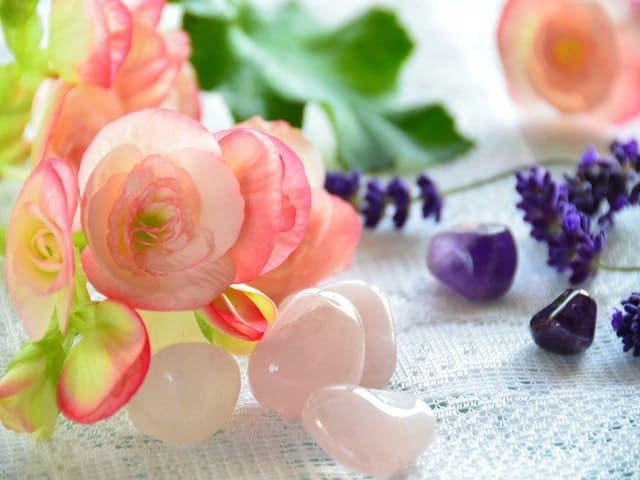
Meditation & Crystals
Meditation can help mend a “broken heart”. It can help to soothe and perhaps (over time) alleviate much of the angst and anxiety associated with it! Calming the mind and central nervous system have a direct affect on how our body “vibrates” and how we choose to handle stress as it comes at us. The more you meditate, the more able you become in handling difficult situations!
~ Use a crystal of your choice or one mentioned. Sit comfortable on the floor and hold your stone or lie down and place the crystal on your Heart Chakra, Throat Chakra or Third Eye Chakra.
~ Close your eyes. Take several deep breaths. Feel the crystal rise and fall as you slowly inhale/exhale. Allow your body to melt into the floor at each breath. Take this time to find your center. Let go of those things which hold you back. With each inhale, take in that which you deserve. With each exhale, release all that tension.
~ When you feel more calm and connected, slowly open your eyes. Give yourself some time to recover. You may even want to journal about your experience.
Crystal Remedy Reference
Crystals have both piezoelectric and pyroelectric properties. This means that the polarities of the crystal will change when subjected to pressure or heat (even body heat from the hands). This will radiate energy from the crystal due to this reversal of polarities. It provides the transfer, storage and transformation of energy.
Offering a balanced energy field, energy modification, amplifies both energy and thought, clarity in thinking, and harmony and alignment with the chakra energy areas.
Crystal Medicine Wheel is based on the Native American medicine pouches, containing many crystals to create your own medicine wheel, sage for cleansing negativity and the best way to use, cleanse and energize them in order to get what you want out of life!!
Crystal Empowerment Pouches are individually filled with several crystals to strengthen and enhance the best energy for each situation. Each suede pouch comes with several crystals and best way to use, cleanse and energize them in order to get what you want out of life!!
Vedic Chakra Oils are wonderfully scented oils come in 1 ounce roll-on bottles and contain genuine crystal waters in vibrationally compatible essential oil blends. They are fantastic for Chakra work, energy healing, as an Aura Balancer, as a balancing perfume oil or simply as a “refresher” for your Gem Potpourri. Vedic Chakra oil blends are perfect to soothe your day.
Gem Essence are the infusion of crystals, spring water and the power of the sun/moon in a bottle! These essence work in harmony with the body by interacting with our bio-sheath and are natural and self-adjusting. When crystals are activated by natural sunlight, they transfer their vibrational signature into water, creating a remedy that is safe, effective and used in conjunction with all modalities of healing. Gem Essence waters can be used internally.

Study Energy Medicine at Home
The Peacefulmind.com Homestudy Courses make it possible for anyone to study energy medicine at home, on your time! These certifications programs are offered by the National Association of Holistic Wellness
*Transitions: The Transformational Guide and Workbook for Creating Great Health This is the culmination of years of Andrew Pacholyk, MS, L.Ac. clinical work. This is a manual you can use, whether you are healthy or ill or somewhere in between and you want to re-balance your mind, body and spirit to become the whole person you can be! This workbook gives you a plan to take care of yourself. It can be used over and over to find balance and keep yourself as healthy as possible. It gives you “tools” to use when and where you need them. It helps to evaluate where you are in your journey and offers ways to get you exactly where you want to be! Want to know more?
*The “Color Elite” Color Therapy Certification Course Andrew Pacholyk, MS, L.Ac. has finally published his most complete healing course using the power of color and light therapy. This ultimate guide to chromotherapy teaches you about color and every aspect of it, how it is used in different therapeutic settings and how it has become such a great healing modality, no matter what profession you are in you will learn how to incorporate color into your daily life! Want to know more?
*The Crystal Light Crystal Therapy Course This incredible course is our biggest and most popular course on the internet! This is the study of crystals and how to heal with earth’s precious gems! Want to know more?
*Chakracology – A Workbook and Manual This workbook format allows you to look at the energy of the Chakra and how they affect us on a daily basis. The book allows you to work through each center on a mental, spiritual, as well as a physical level and then find ways to re-align, balance and manage your energy in a positive way! Want to know more?
*The Healing Art of Touch – Massage Therapy Homestudy Learn the art of touch and massage therapy through Andrew’s very extensive course. Complete anatomy lessons, varied techniques and amazing information is offered in this course. Also learn the business aspects of massage, how to cope with clients that are difficult and energy transference are just a few of the many topics covered! Want to know more?
*What’s Your Heart Telling You? Finding Love and Romance – The Workbook and Journal Andrew Pacholyk, MS, L.Ac. has now published his newest work based on years of personal intimacy, clinical experience, counseling and client research on the ways to navigate love, sex, romance and relationships in a modern day world. Andrew has devised this very thorough workbook and journal with questionnaires, exercises, quotes, tips, meditations, feng shui, aromatherapy, massage and herbal applications for creating the perfect scenario for finding, coping and keeping love in your life! Want to know more?
*The Feng Shui Journal The Peacefulmind.com Feng Shui Journal makes it possible for you to improve relationships, maximize career potential and enhance your environment! * We are honored to offer the Feng Shui Journal for beginner to advanced Feng Shui practitioners. This journal covers an extensive background on Feng Shui techniques history, usage, clearing, cleansing, manifesting and helpful information in order to bring balance back into your life! Want to know more?
What are your experiences with heart health?
Sharing your own experiences often helps others. We’d love to know in the Peacefulmind Community.
Questions? Comments! Order Help? Please Contact Us


